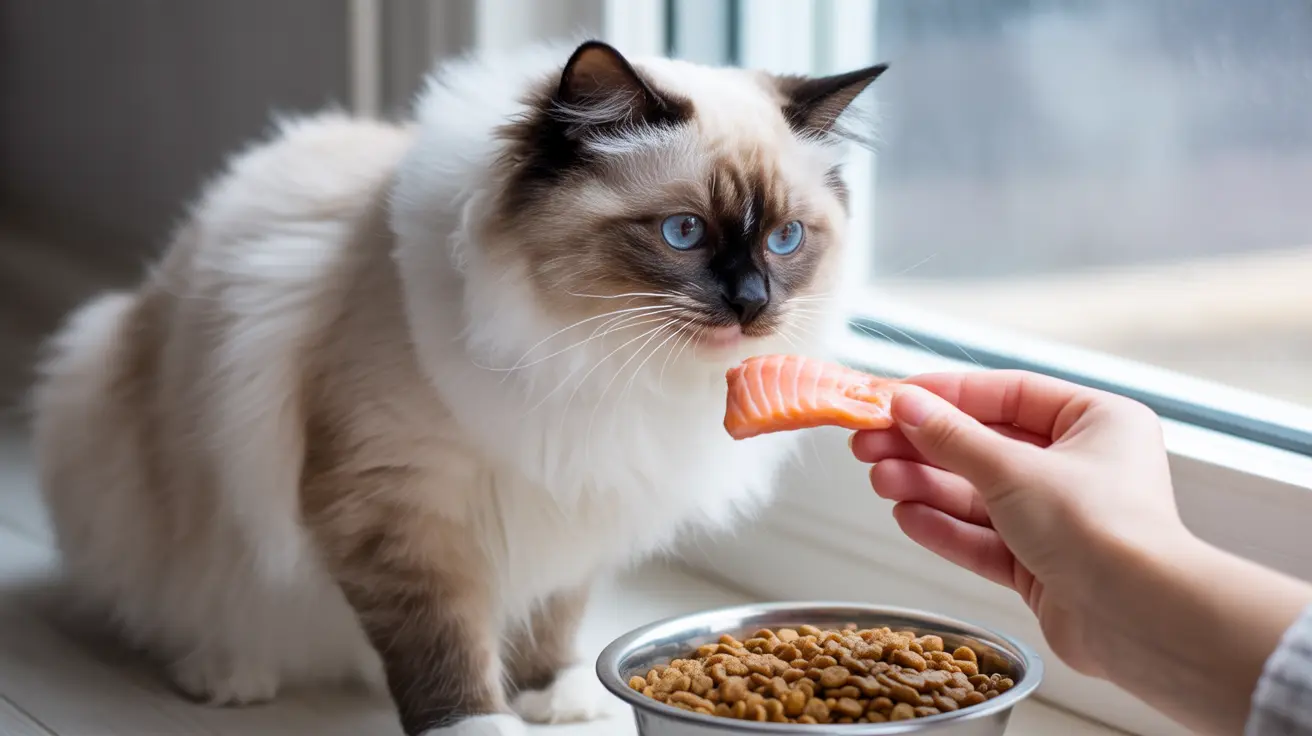Understanding Your Cat's Changed Eating Habits
When cats suddenly become selective about their food, it often points to specific underlying causes. The contrast between refusing dry food while accepting treats typically occurs because treats are usually more palatable, softer in texture, and more aromatic than regular kibble.
Medical Causes Behind Food Selectivity
Dental problems are one of the most common medical reasons cats may avoid dry food while still eating treats. Conditions such as gingivitis, tooth decay, or oral infections can make crunching hard kibble painful, while softer treats remain manageable.
Other health issues that might cause this behavior include:
- Upper respiratory infections affecting smell and taste
- Digestive system problems
- Kidney disease
- Oral tumors or lesions
The Role of Food Quality and Freshness
Sometimes, the issue lies with the dry food itself. Kibble can become stale, rancid, or contaminated, especially if not stored properly. Cats have highly sensitive noses and may detect changes in food quality that we cannot perceive.
Environmental and Behavioral Factors
Changes in your cat's environment or routine can significantly impact their eating habits. Consider recent modifications such as:
- New food bowl location
- Different feeding schedule
- Household stress (new pets, moving, visitors)
- Changes in food brand or formula
Solutions to Restore Normal Eating Habits
Taking a systematic approach to resolving your cat's eating issues can help identify and address the root cause:
Immediate Steps to Take
- Check the dry food's freshness and storage conditions
- Ensure clean, wide feeding bowls that don't touch whiskers
- Maintain consistent feeding times and locations
- Gradually reduce treat frequency
Long-term Strategies
For lasting results, consider implementing these changes:
- Rotate between high-quality dry food brands
- Add small amounts of warm water to kibble to enhance aroma
- Use feeding puzzles to make dry food more engaging
- Schedule regular veterinary check-ups
When to Seek Veterinary Care
If your cat's selective eating persists for more than 24-48 hours or is accompanied by other symptoms, consult your veterinarian immediately. Watch for warning signs such as:
- Weight loss
- Lethargy
- Vomiting or diarrhea
- Excessive drooling
- Changes in water consumption
Frequently Asked Questions
Why has my cat stopped eating dry food but still eagerly eats treats?
This behavior often indicates dental problems, illness, or food quality issues. Treats are typically softer and more aromatic, making them easier and more appealing to eat despite these problems.
Could dental problems be causing my cat to avoid dry kibble but eat soft treats?
Yes, dental issues are a common reason cats avoid hard kibble while still eating softer treats. Pain from tooth decay, gum disease, or oral infections can make crunching dry food uncomfortable.
How do stress and environmental changes affect a cat's willingness to eat dry food?
Cats are sensitive to changes in their environment. Stress from moving, new pets, or schedule changes can cause them to become selective eaters, often preferring familiar treats over regular food.
Can spoiled or stale dry food make cats refuse their regular meals but accept treats?
Yes, cats have a keen sense of smell and may reject dry food that has become stale or rancid while still accepting fresh treats. Always store kibble properly and check for freshness regularly.
What steps can I take to encourage my cat to eat dry food again if they prefer treats?
Try warming the food slightly, adding small amounts of water to enhance aroma, gradually reducing treats, and ensuring proper food storage. If problems persist, consult your veterinarian to rule out health issues.






